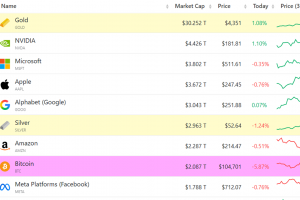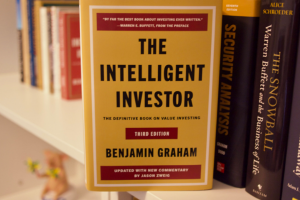Gold has leapt to historic highs, leaving many asking: “Why now?” Join me as I unravel the layers — safe-haven flows, real interest rates, institutional demand, supply constraints — that explain this surge. With clarity and nuance, I invite you to think differently, comment, and share your views. Because knowledge is best when it spreads.
Stop Scrolling — Here’s Why Gold Is Blowing Up Right Now (and Why You Should Care)
1. Setting the Stage — A Price Explosion Worth Stopping For
In 2025, gold is no longer just “solid.” It’s on fire. The metal has blasted past $4,000 per ounce, setting record after record. It’s not merely a rally — it’s a revaluation. What was once considered a slow, steady hedge asset now looks like a high-speed rocket in macro space.
In the last few months, gold’s momentum has surprised many. The jump from ~$3,500 to $4,000 took just ~36 days — a velocity rarely seen in such a “safe asset.” Institutional investors, central banks, traders — all eyes are on the yellow metal. What’s pushing this surge? That’s what we’ll unpack right now.
2. The Five Pillars Pushing Gold Higher
Below are the core drivers — interlocking forces — that explain why gold is not just rising, but exploding. Recognize one or two of these? The rest may surprise you.
1. Real (or “after inflation”) interest rates falling — gold’s opportunity window
Gold itself pays no interest or yield. This means its appeal increases when the opportunity cost of holding it falls. In other words, when real interest rates (nominal rates minus inflation) dip — gold becomes relatively more attractive.
In 2025, real yields in many markets have turned negative or very low. Investors are realizing that cash or bonds may lose purchasing power over time. Locking capital into a physical store-of-value like gold begins to look smarter.
Further, expectations that the U.S. Federal Reserve may begin cutting rates have intensified. A softer rate environment further erodes the appeal of fixed-income returns relative to gold.
So: lower real yields = bigger tailwind for gold.
2. Central Bank Accumulation — Institutional demand at scale
One of the most structural shifts in recent years is how central banks are rewriting their reserve strategies — and gold is central to that rewrite.
Across the globe, central banks are loading up on gold reserves. Even amid record prices, they keep buying. Some purchases are reported; others are “unreported” or opaque. These moves reflect strategic hedging: diversifying away from reliance on a single reserve currency (like the U.S. dollar), guarding against sanctions or currency instability, or simply locking in a hard asset in a world of sovereign debt.
When a central bank places a big order for gold, that’s not momentum chasing — that’s structural support. Combined with retail and institutional flows, that’s a powerful underpinning.
3. Geopolitical stress & Safe-Haven Demand
Gold’s traditional role — a store of value when trust in institutions wobbles — is alive and well today.
From simmering trade tensions between the U.S. and China to uncertainties in energy, politics, and global alliances, every headline reinforces fear. Markets hate uncertainty; gold thrives amid it.
When investors see headlines like “geopolitical standoff” or “economic instability,” many shift a portion of capital into assets perceived as durable, reliable, and outside the banking/fiat systems. Gold has long held that role — and right now it’s playing it in full force.
4. Dollar Weakness & Currency Debasement Fears
Gold is priced in U.S. dollars globally. When the dollar falls or looks unstable, gold often gains.
In 2025, broader structural and fiscal pressures have created a narrative of dollar fatigue or debasement. Mounting U.S. budget deficits, inflationary pressures, and existential questions about the dollar’s dominance are eroding confidence.
Simply put: if people believe the dollar will lose purchasing power over time, holding gold becomes a natural hedge.
5. Supply constraints & Limited Fresh Gold
Unlike paper money, gold doesn’t respond to interest rate cuts or stimulus printing. Its supply is largely tied to mining output and recycling. In recent years, new large gold discoveries have been rare, and environmental, regulatory, or capital constraints have slowed new mine development.
This structural bottleneck means even moderate increases in demand can send prices upward sharply.
Additionally, gold locked up in central bank vaults or held by long-term investors reduces “free float,” making available supply for trading and buying scarcer.
3. Putting It Together — A Perfect Storm, Not Just Luck
These five pillars don’t act in isolation. They feed into one another, creating compounding momentum:
-
Central banks buy → less supply for private buyers → prices push upward → more momentum flows
-
Expectations of rate cuts reduce opportunity cost → gold demand accelerates
-
Geopolitical stress increases risk aversion → safe-haven flows surge
-
Dollar weakness adds fuel to the fire
We are witnessing what might become one of the strongest secular gold runs in modern times. While comparisons to the late 1970s are tempting, today’s environment is different — more interconnected, more global, more leveraged to policy and capital flows.
Analysts and large institutions are already revising their targets upward. HSBC, for example, raised its average gold price forecasts for 2025 and 2026 citing elevated safe-haven demand and a weaker dollar.
Yet risk remains. The rally may be parabolic and volatile. Overbought technical conditions, policy surprises, or a return of dollar strength could trigger sharp pullbacks or consolidation phases.
4. What This Means for You (Reader / Investor / Curious Mind)
You don’t need to be a billionaire or a hedge fund manager to learn from what’s unfolding. Here’s what you can take away:
-
Rethink your assumptions
If you believed “gold’s boring, low yield, low upside,” this shift demands a reconsideration. It’s no longer just a defensive holding — it’s become a strategic asset in today’s macro regime. -
Diversify smartly
If you don’t already, consider modest exposure to gold or gold-linked instruments — especially if your portfolio is heavily equity or bond focused. -
Monitor policy cues
Watch the Federal Reserve, central bank commentary (China, India, Russia), and geopolitical developments. Gold often moves ahead of consensus as sentiment shifts. -
Respect volatility
This run won’t be smooth. Expect sharp swings, fake-outs, and trend reversals. Treat corrections as opportunities, not failures. -
Stay curious & critical
Don’t swallow headlines or predictions wholesale. Use the five pillars above as a mental checklist each time gold moves. Question narratives, check supply stats, track new central bank buying, and always ask: “Which force changed today?”
If you found even one insight here that shifted how you see gold — drop a comment with “#GoldAwakening”. Let’s turn this into a thread where we share data, debate forecasts, and sharpen our thinking — together.
If this post adds value to your feed or opens a new lens on macro, hit “Share.” The world needs more informed perspectives, not noise.
Let this be the spark — because when ideas go viral, minds change — and we all grow smarter.
























